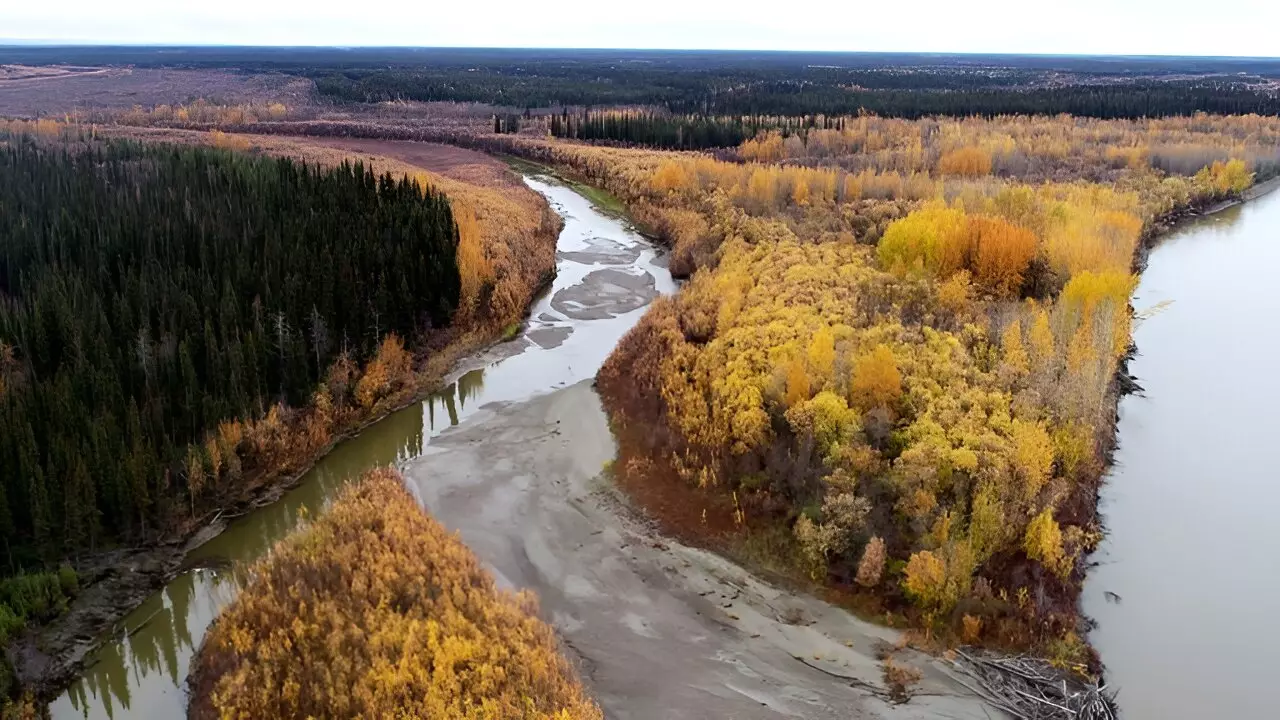The Arctic region, while often viewed as remote and pristine, is facing a mounting environmental crisis brought about by climate change. Among the hidden dangers posed by this warming climate is the release of mercury, a toxic metal once sequestered in the region’s permafrost. The Yukon River, an essential waterway in Alaska, is central to this process, as it erodes permafrost along its banks, releasing mercury into the freshwater system. This article delves into the implications of this phenomenon, emphasizing its potential risks to both the environment and the health of local populations.
Mercury pollution is not a localized issue; it travels vast distances through atmospheric currents. Atmospheric circulation patterns often funnel pollutants towards the Arctic, where they accumulate at alarming rates. Because the chemical properties of mercury enable it to bond with soil and organic matter, it eventually becomes trapped in permafrost. Over centuries, this accumulation can reach levels far exceeding those found in oceans, soils, and the atmosphere combined.
As the Arctic warms—temperatures in the region are rising at rates up to four times faster than the global average—this frozen repository of mercury begins to thaw. The implications are severe, especially for the millions of people residing in the Arctic zone, many of whom rely on hunting and fishing for their sustenance. A destabilized ecosystem can lead not only to environmental degradation but also significant health risks for these communities.
New Research Methods: Unearthing the Truth
Recent studies, such as one conducted by researchers at the USC Dornsife College, have introduced novel methods for estimating mercury levels in the Yukon River Basin. Traditionally, assessments relied on taking core samples from the upper layers of permafrost, which often yielded inconsistent results. The team aimed to overcome these limitations by analyzing sediments from the riverbanks and sandbars, enabling them to tap into deeper soil layers.
The findings indicate that mercury levels in these sediments correlate with higher estimates from previous studies. This consistency helps establish a more nuanced understanding of mercury contamination dynamics. Moreover, the research assists in forecasting how climate change will further mobilize mercury as permafrost continues to thaw in the coming decades.
The Yukon River is not static; it undergoes natural changes in its path over time. These shifts significantly impact the amount of mercury-laden sediments that the river can erode and redistribute. By employing remote sensing technology, researchers can monitor these alterations, offering insights that are vital for predicting mercury movement through the ecosystem.
Interestingly, the grain size of river sediments plays a critical role in mercury content. Finer sediments have been found to harbor more mercury than their coarser counterparts, necessitating a more careful approach to assess which soil types pose greater environmental risks.
Although the immediate dangers posed by mercury released from melting permafrost may not be acute, the long-term implications are considerable. As mercury bioaccumulates in aquatic ecosystems, it unavoidably enters the human food chain, particularly through fish and game that local residents consume. While researchers assert that risks associated with drinking water contamination are minimal, dietary exposure remains a significant concern.
As concentrations of mercury rise due to ongoing environmental changes, Arctic communities will have to contend with both environmental and health challenges that could profoundly affect their way of life.
The emerging research paints a complex picture of the threats posed by mercury in the Arctic, driven by intricate interactions between climate change, permafrost thaw, and river dynamics. Understanding these processes is crucial in developing effective mitigation strategies and future studies. The “mercury bomb” that some researchers warn of is not just a hypothetical threat but a pressing issue that demands attention. As we confront this environmental challenge, it becomes imperative to equip Arctic communities with the tools and knowledge to adapt and thrive despite the looming threats. Without vigilant action and comprehensive research, the repercussions of mercury release could significantly undermine the health and ecological integrity of this crucial region.

